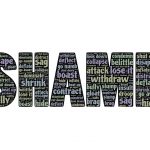Professor Sacked after Reporting that Alcohol is the Most Harmful Drug

On October 29 2009, professor David Nutt was the chair of the UK government’s Advisory Committee on the Misuse of Drugs. However, on the following day, he was promptly sacked after publishing a paper that assessed and compared the harms associated with legal and illegal drugs.
In the Estimating Drug Harms report, the Imperial College professor referred to 2007 research data that involved 20 substances and utilised an assessment system that identified nine different parameters of drug harms that covered physical harms, dependence and social harms.
And this research raised questions over the validity the British drug classification system, under the UK Misuse of Drugs Act 1971, which classifies drugs under three classes: A, B and C.
Drug harms rated
The report listed the top five drugs that cause the most harm as heroin, followed by cocaine, barbiturates, street methadone, and alcohol. While tobacco came in at number nine.
Cannabis, MDMA and LSD came in at eleventh, fourteenth and eighteenth respectively. All of these illegal substances were found less harmful than their legal counterparts, alcohol and tobacco. While MDMA and LSD are both listed as class A drugs, which are supposed to be the most dangerous.
“I believe that the challenges of dealing with the harms of alcohol is probably the biggest challenge that we have in relation to drug harms today,” professor Nutt concluded in the report. And he also called for an overhaul of the drug classification system, so as to reflect the harm-based evidence.
UK drug penalties
Under the UK Misuse of Drugs Act, the three classes of drugs also reflect the penalties associated with their possession and trafficking.
The maximum penalties for possession are seven years imprisonment for class A, five years for class B, and two years for class C. Whereas, supplying class A drugs can land you in prison for life, and class B and C supply charges carry a maximum penalty of up to 14 years behind bars.
Professor Nutt points out that in the UK, the consumption of illicit substances is not a crime. He explains that this is because it’s “not a particularly useful way of reducing harm.” However, civil or employment penalties can be imposed for detected drug use.
The professor also noted that the penalty for supplying a class C drug had once only been 7 years imprisonment, but it was upped to 14, after cannabis was downgraded from a class B drug to a class C in 2004. However, cannabis was eventually upgraded back to class B in 2009.
The laws in NSW
Certain drugs are prohibited under the schedules of international treaties, such as the United Nations 1961 Convention on Narcotic Drugs and the 1971 Convention on Psychotropic Substances. In NSW, these controls are legislated under the Drug Misuse and Trafficking Act (DMT Act) 1985.
Section 10 of the DMT Act provides that a person found to be in possession of an illegal drug is guilty of an offence. Under section 12, it’s a crime to self-administer a prohibited drug in NSW. The maximum penalty for each of these offences is 2 years imprisonment and/or a fine of $2,200.
Schedule 1 of the DMT Act contains a list of substances and plants prohibited in this state. Unlike the UK, the various drugs are not classified under different classes. But, the schedule lists a range of quantities for each drug that incur steeper penalties as the amounts get larger.
NSW supply charges
The listed quantities in schedule 1 include a small quantity, a traffickable amount, an indictable quantity, a commercial amount, and a large commercial supply. The actual amounts vary from drug to drug.
Section 29 of the DMT Act stipulates that if a person is found with more than a traffickable amount of a prohibited drug in their possession, they can be found guilty of supply, even if there’s no evidence they were intending to provide the substance to another person. This is known as deemed supply.
In the case of MDMA, a traffickable quantity is 0.75 grams. An indictable amount of MDMA is 1.25 grams, and if someone is charged with supplying an indictable quantity (whether deemed or actual supply) the case must be dealt with in a higher court such as the District Court and face a maximum penalty of 15 years in prison, and/or a fine of $22,000.
A commercial quantity of MDMA is 125 grams. This amount can see a person imprisoned for up to 20 years and receive a fine of up to $385,000. A large commercial supply of the drug is 500 grams, which comes with a maximum sentence of life imprisonment and/or a fine of $550,000.
Experts independent of government
The year after professor Nutt’s report caused him to lose his position on the UK government’s drug advisory committee, he was involved in another drug harm report, which was produced on behalf of the Independent Scientific Committee on Drugs.
The Drug Harms in the UK: A Multicriteria Decision Analysis was another study that involved assessing the harms caused by the misuse of 20 licit and illicit substances. The drugs were given an overall harm score out of 100.
The evaluation involved 16 criteria: nine related to the harms that a drug produces in an individual, and seven related to the harms to others. These included drug-specific mortality, dependence, crime, environmental damage and international damage.
The report found that the most harmful drugs to those who used them were crack cocaine with a score of 37, followed by heroin with 34, and methamphetamine at 32. In regard to harm caused to others, alcohol ranked highest at 46, followed by heroin at 21, and crack cocaine at 17.
Alcohol: the major issue
Overall, the drug found to be most harmful was alcohol, followed by heroin and then crack cocaine. The report researchers concluded that “aggressively targeting alcohol harms is a valid and necessary public health strategy.”
The researchers further confirmed what previous reports from the United Kingdom and the Netherlands had found, which was that “present drug classification systems have little relation to the evidence of harm.”








